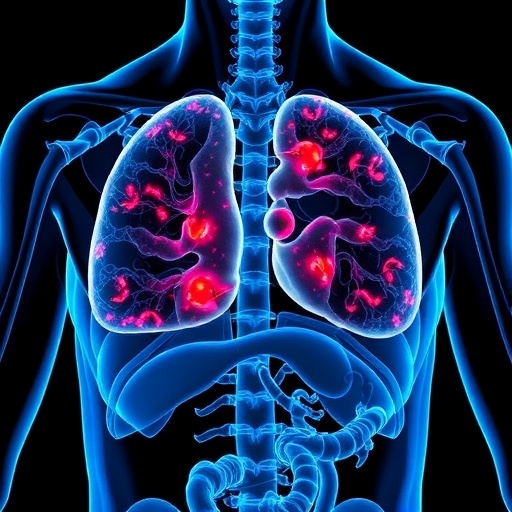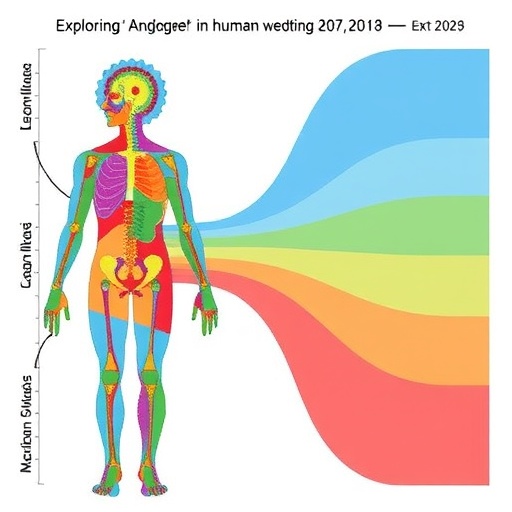
In a groundbreaking advance that intertwines microbiome-derived metabolites and cardiovascular disease, researchers have unveiled the pivotal role of imidazole propionate (ImP) as a driver of atherosclerosis, offering new vistas for targeted therapy. Imidazole propionate, a microbial metabolite characterized by its imidazole ring structure, has emerged from obscurity to center stage in the inflammation-driven mechanisms underlying atherogenesis. This discovery not only elucidates a novel molecular axis in immune signaling but also presents compelling evidence for therapeutic interception of disease progression.
At the heart of this revelation stands the imidazoline receptor I1R, ubiquitously expressed in immune cells, acting as a specific sensor for ImP. The ability of ImP to engage I1R was scrupulously confirmed through a combination of pharmacological antagonist treatments and genetic silencing techniques in bone marrow-derived macrophages (BMDMs) and mouse embryonic fibroblasts (MEFs). Importantly, antagonists selective for I1R, such as AGN192403, demonstrated a potent blockade of ImP-induced phosphorylation of the ribosomal protein S6 (p-S6), an mTOR pathway hallmark, and the secretion of the key inflammatory cytokine tumor necrosis factor (TNF). These data strategically pinpoint I1R as the critical conduit translating microbial metabolite signals into pro-inflammatory outputs conducive to atherosclerosis.
The mechanistic insights into ImP’s signaling pathway reveal a sophisticated interplay whereby ImP induces mTOR activation and subsequent inflammatory gene expression through its interaction with I1R. Phosphoproteomic dissection highlights that inhibition of I1R effectively quenches downstream mTOR activation, positioning this receptor as a gatekeeper of ImP’s pathophysiological influence. The specificity of this signaling axis was further substantiated by RNA interference targeting the gene encoding I1R (Nisch), which abrogated ImP-mediated inflammatory responses, thereby reinforcing the strict dependency on this receptor pathway.
.adsslot_GWtlSTiDJa{width:728px !important;height:90px !important;}
@media(max-width:1199px){ .adsslot_GWtlSTiDJa{width:468px !important;height:60px !important;}
}
@media(max-width:767px){ .adsslot_GWtlSTiDJa{width:320px !important;height:50px !important;}
}
ADVERTISEMENT
To dissect the cell-specific contributions of I1R in the pathogenesis of atherosclerosis, investigators engineered myeloid-specific knockout mice (Lyz2ΔNisch) through the deletion of Nisch in myeloid lineage cells. This refined genetic model exhibited selective ablation of I1R in spleen myeloid populations while preserving receptor expression in lymphocytes, thus isolating the myeloid compartment’s role. Functional assays demonstrated that ImP-triggered induction of p-S6 and inflammatory cytokine production was completely dependent on myeloid I1R expression, elegantly confirming the receptor’s authoritative role in myeloid-driven atherogenic inflammation.
The translational relevance of these findings was decisively tested in an atherosclerosis-prone Ldlr knockout mouse model. Bone marrow transplantation from either wildtype Nisch-floxed or myeloid-specific I1R-deficient donors was followed by ImP administration, exposing the phenotypic ramifications of myeloid I1R absence during disease challenge. Remarkably, mice lacking myeloid I1R were impervious to ImP-induced atherosclerotic lesion development, decisively linking myeloid I1R to disease exacerbation and underscoring its therapeutic potential.
Pharmacological blockade of the ImP-I1R interaction yielded equally potent protective effects in atherosclerosis. Administration of the selective I1R antagonist AGN192403 alongside ImP in Apoe-deficient mice forestalled the formation of lipid-rich atherosclerotic plaques without influencing systemic ImP levels or lipid profiles. This underlines that blockade targets receptor-mediated immune activation rather than metabolic availability of the ligand. Additionally, AGN192403 treatment attenuated the expansion of pro-inflammatory Ly6C^hi monocytes and T helper 1 (T_H1) cells in circulation, alongside a dampened systemic cytokine milieu typified by TNF and interferon gamma. These immunomodulatory changes orchestrated by receptor blockade reflect a profound recalibration of the immune landscape underpinning atherogenesis.
Beyond systemic immunity, AGN192403 suppressed the localized arterial immune microenvironment alterations driven by ImP. Notably, the drug normalized the elevated ratio of pro-inflammatory T_H1 cells to regulatory T cells (T_reg) within the aortic infiltrate, mitigating immune cell imbalance that potentiates vascular inflammation. Furthermore, it prevented the recruitment of activated macrophages and B cells to the vessel wall, indicative of a comprehensive immunosuppressive effect shaping atheroprotective tissue homeostasis. These findings meticulously connect receptor pharmacology to cellular immunology within the vascular niche.
Extending the therapeutic implications, AGN192403 was evaluated in a high-cholesterol dietary context, a model closely mirroring human atherosclerosis pathophysiology. In Apoe-deficient mice fed a cholesterol-enriched diet, the addition of AGN192403 effectively curtailed plaque burden and reduced necrotic core formation within aortic lesions, both surrogate markers of disease severity. This outcome not only validates the receptor’s centrality in diet-induced atherogenesis but also proposes I1R antagonism as a promising adjunct to conventional lipid-lowering strategies.
Delving deeper into the molecular underpinnings, the phosphorylation of S6 ribosomal protein emerges as a crucial nexus linking ImP stimulation to the activation of mTOR signaling in macrophages. This event represents an intersection of metabolic sensing and inflammatory programming, enabling ImP to potentiate macrophage activation states conducive to vascular injury. The exquisite sensitivity of this phosphorylation event to I1R inhibition consolidates the receptor’s role as a proximal mediator of metabolic-immune crosstalk.
This compendium of evidence collectively positions the ImP-I1R axis as a critical driver of inflammation and atherosclerosis, illuminating a previously uncharted mechanism by which gut microbiota metabolites orchestrate systemic immune responses with pathological consequences. By demonstrating that I1R deletion or pharmacological antagonism offers robust protection against ImP-induced atherogenesis, the study paves the way for innovative therapeutic strategies targeting microbe-host molecular dialogues.
The broader implications of these findings resonate beyond cardiovascular disease. Given the ubiquity of imidazoline receptors and the systemic circulation of microbial metabolites, it is plausible that similar mechanisms may influence other chronic inflammatory disorders. Targeted blockade of I1R could therefore represent a versatile platform to modulate maladaptive immune activation in a spectrum of diseases driven by microbiome-derived metabolites.
In sum, the identification of imidazole propionate as an endogenous ligand for the imidazoline receptor I1R reframes our understanding of microbiota-host interactions and their impact on vascular inflammation and atherosclerosis. The translational potential encapsulated within this pathway, underscored by effective pharmacological inhibition, propels the ImP-I1R axis into the spotlight as a therapeutic target deserving of intense clinical investigation. Future research will undoubtedly explore the nuances of receptor signaling, ligand diversity, and interventional timing to harness this axis for cardiovascular protection.
Subject of Research:
The investigation delineates imidazole propionate as a microbial metabolite that promotes atherosclerosis via activation of the imidazoline receptor I1R on myeloid cells, identifying this receptor as a therapeutic target.
Article Title:
Imidazole propionate is a driver and therapeutic target in atherosclerosis.
Article References:
Mastrangelo, A., Robles-Vera, I., Mañanes, D. et al. Imidazole propionate is a driver and therapeutic target in atherosclerosis. Nature (2025). https://doi.org/10.1038/s41586-025-09263-w
Image Credits:
AI Generated
Tags: Atherosclerosis and Microbiome MetabolitesBone Marrow-Derived Macrophages ResearchImidazole Propionate in Cardiovascular DiseaseImmune Signaling in AtherogenesisInflammation and Atherosclerosis MechanismsMetabolitemTOR Pathway in Cardiovascular HealthPharmacological Antagonists in Disease TreatmentRole of Imidazoline Receptor I1RTherapeutic Targets for AtherosclerosisTumor Necrosis Factor in Inflammation






